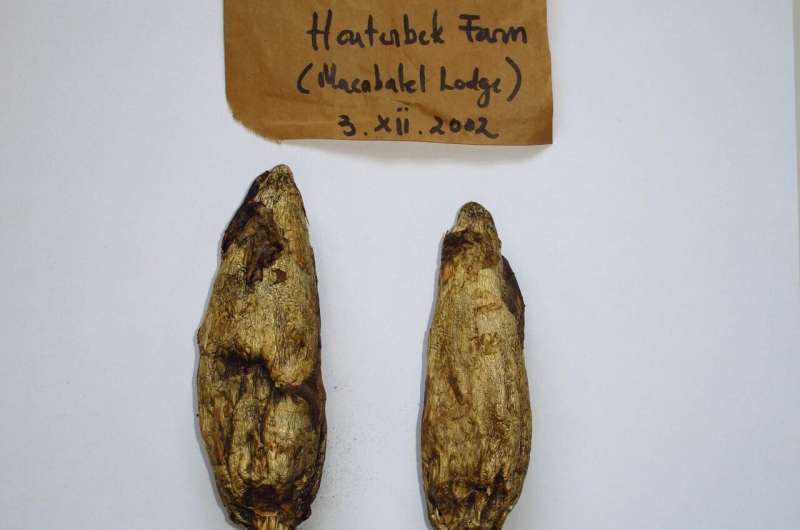Fungal spores from 250-year-old collections given new lease of life

The biological and historical diversity in museum collections is staggering, with specimens collected across centuries by some of the most famous scientists in history. In a new study, researchers from the University of Copenhagen successfully revived museal fungal specimens that were more than 250 years old and used the live cultures for whole genome sequencing and physiological experiments.
Echoing through history by reviving fungal specimens originally preserved and described a flabbergasting quarter of a millenium ago by the "Father of Modern Taxonomy" Carl Linnaeus, this study highlights the untapped potential of museum collections in modern research programs. The results have just been published in the renowned Cell Press journal iScience.
The "desert coprinus" fungus Podaxis has fascinated scientists and explorers for centuries, still the genus has been subjected to relatively little research. These large mushrooms thrive in hostile and mostly species-free environments and while they occur seasonally and unpredictably in deserts and on termite mounds, researchers are faced with a problem common to many biologists: Where do we find it? The researchers from the Department of Biology turned to an unconventional sampling location: Museum collections. By requesting fungal spores from various collections, including the Linnaean Society of London and the Natural History Museum of Denmark, they were able to collect more than 200 specimens from every continent aside from Antarctica. The specimens varied in age from 2 to 250 years old.
Given the finding that fungal spores can grow after 2-5 years in a museum, the limit for their revival was tested. Eventually the researchers succeeded in germinating and growing two Podaxis specimens collected in the 1770s and classified by Linnaeus in Uppsala. These results reveal an extraordinary capacity for Podaxis spores to remain viable through extended periods of drought and suggests that they can remain dormant in the environment for centuries before germinating once conditions allow.
"It was really incredible to have these fungi growing in our lab, which we knew had been handled by a scientist as important as Linnaeus, who founded the system of naming species. It allowed us to perform experiments and produce genomes of a quality that would have been impossible with dried specimens," explains postdoc and first author Benjamin Schantz-Conlon of the Department of Biology, University of Copenhagen. Schantz-Conlon continues: "It was very interesting to examine the adaptations allowing Podaxis to survive under extreme conditions, hereunder also in herbarium collections where the samples traditionally has been treated with mercury as a pesticide".
The researchers used the specimens to ask whether free-living Podaxis species growing in deserts were genomically and physiologically different from species growing on termite mounds. The results indicated that the association with termites gave rise to smaller genome sizes and a reduced tolerance to stressful conditions.
"These findings suggest that Podaxis living in association with termites are experiencing a relaxed selection pressure and a potential protection from competition and exposure to stressors in the environment", says corresponding author Michael Poulsen, professor at the Department of Biology.
Previous research has shown there is an overlap between tolerance to extreme conditions such as deserts and pathogenicity. By comparing the transition from a free-living state in a desert to a symbiotic state within a termite mound, the researchers hoped to learn more about the evolution of fungi that shift to associate with hosts, including pathogens.
"While Podaxis living in an obligate association with termites exhibited relaxed selection, we also found some Podaxis which could survive both on termite mounds and free-living in deserts. In this case, we saw little genomic or physiological difference between them and the fully free-living Podaxis, suggesting the adaptations for life in the desert may facilitate the initial colonization of termite mounds; something which is also seen in opportunistic pathogens."
An immense resource of knowledge is stored in museum collections and we should work to ensure that these specimens can be used to answer important questions in science in the future.
More information: Benjamin H. Conlon et al, Genome reduction and relaxed selection is associated with the transition to symbiosis in the basidiomycete genus Podaxis, iScience (2021). DOI: 10.1016/j.isci.2021.102680
Journal information: iScience
Provided by University of Copenhagen


















